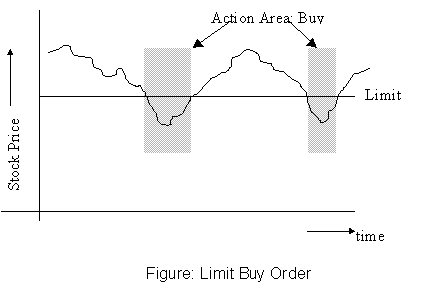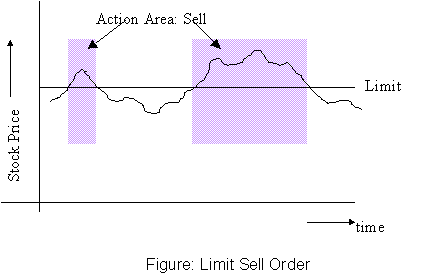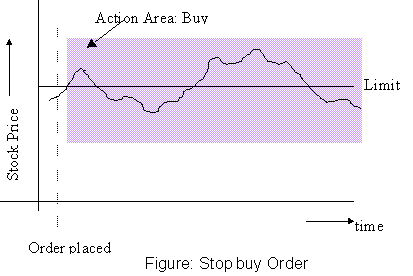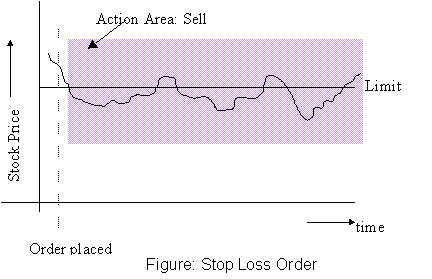The money market refers to short-term marketable, liquid, low-risk debt securities. Capital markets include longer-term and riskier securities.
T-bills represent promises of the government to the holder to pay a certain amount at a future date, usually within a year. Investors buy the bills at a discount from the government from the stated maturity value. The return to the holder is the difference between the stated value received at maturity and the price paid in the beginning.
T-bills are usually quoted using the bank discount yield.
![]() , where FV is the face value of
the bill, P is the price of the bill, and n is the number of days left to maturity on the bill. This
is equal to the number of days left to maturity on the trade day less the one
busines day allowed for payment, following the skip-day settlement convention.
, where FV is the face value of
the bill, P is the price of the bill, and n is the number of days left to maturity on the bill. This
is equal to the number of days left to maturity on the trade day less the one
busines day allowed for payment, following the skip-day settlement convention.
The bond-equivalent yield on the bill is computed as ![]()
The effective annual yield on the bill is computed as 
Example:
Consider the following bills from the Wall Street Journal, quoted as of mid-afternoon, Oct. 12, 1999.
|
Maturity |
Days to maturity |
Bid |
Asked |
Change |
Yield |
|
Oct 28 '99 |
16 |
4.40 |
4.32 |
-0.01 |
4.39 |
|
Nov 04 '99 |
23 |
4.44 |
4.36 |
-0.07 |
4.43 |
We can use the ask banker's discount quote to get the price. The price, P, would satisfy the equation 0.0432 = [(100-P)/100](360/16). Hence, P = 99.808 per $100; so if the investor bought $1m. worth of bills, the payoff at the end of the 16 days would be $1m./0.99808 = $1,001,923.70. We can now use this price of 99.808 in the bond-equivalent yield formula. We would find that [(100-99.808)/99.808](365/16) = 0.0439. The effective annual yield can be computed as (1.0019237)(365/16) = 1.0448, or a rate of 4.48% per year.
Links related to Treasury Securities
You may also want to check these other links on Treasury Securities:
Using the following data, we will see how different kinds of market indexes are constructed:
| Stock | Closing Price (Day 1) | Closing Price (Day 2) | No. of Shares Outstanding (millions) | Value of Outstanding Stock (end of Day 1; billions) | Value of Outstanding Stock (end of Day 2) |
| Coca Cola | 63.75 | 64.50 | 2480 | 158.1 | 159.96 |
| Microsoft | 135.25 | 132.375 | 1198 | 162.03 | 158.585 |
Return on Coca-Cola: 64.5/63.75 - 1 = 1.18%
Return on Microsoft: 132.375/135.25 - 1 = -2.13%
Dow Jones Average (price weighted average)
The Dow, which represents 30 large "blue-chip" corporations, was originally computed as the simple average of the prices of the stocks in the index. However, to ensure that the average did not change when there was a stock split, there were some adjustments to the weights, and hence to the divisor. The percentage change in the Dow measures the return on a portfolio that holds one share in each stock. The amount of money invested in each stock is equal to the price of that stock. .
The following example uses the data in the table above, and assumes that the weight of each stock is equal to one.
Index value: Day 1 |
(63.75+135.25)/2 = 99.5 |
Index value: Day 2 |
(64.5+132.375)/2 = 98.4375 |
Percentage Price Change |
98.4375/99.5 - 1 = -1.07% |
If Coca Cola splits as of the end of day 2, then we need to adjust the divisor (currently 2), so that the value of the index does not change. This is necessary, if we presume that the stock split has not affected the "level" of the market. Assuming that the split simply halved the price of Coca Cola’s stock, the new divisor, D, must satisfy the equation (32.25+132.375)/D = 98.4375; i.e. D = 1.67238. As of January 29, 1998, the divisor was equal to 0.25
Although we have chosen to depict the index as the average price of a Dow stock, the index is meant to simply represent the "level" of the market. Consequently, we could multiply all index values by a constant, without changing the information in the index.
Note, however, that because of the nature of the construction of the Dow, the changes in the Dow Jones Index do not represent changes in the value of any portfolio. (See the article in the Economist, "A Poor Average," May 26, 2001, in the Investments section of the Media Articles page.)
S&P 500 Stock Index (market-value weighted average)
Represents a broad-based index of 500 stocks. The Index is effectively the total market value of all the stocks in the index on each day. Measures the return on a portfolio that invests an amount in each stock proportional to the market value of the outstanding shares.
Index value: Day 1 |
158.1+162.03 = 320.13 |
Index value: Day 2 |
159.96+158.585 = 318.545 |
Percentage Price Change |
318.545/320.13 = -0.495% |
The Nasdaq Composite Index is another market-value weighted index.
Equally weighted indexes
Measures the value of a portfolio that invests an equal amount in each stock at each point in time. The percentage change in the index does not correspond to the return on any buy-and-hold portfolio. For example, on day 1, to achieve the goal of investing an equal number of dollars in each stock, if we were to invest $50 in each stock, we would have to buy 50/63.75 = 0.7843 units of stock 1 and 50/135.25 = 0.3697 units of stock 2. The total portfolio values are given below
Index value: Day 1 |
0.7843(63.75) + .3697(135.25) = 100 |
Index value: Day 2 |
0.7843(64.5) + .3697(132.375) = 99.526 |
Percentage Price Change |
99.526/100 - 1 = -0.47% |
This percentage price change is equal to the simple average of the returns on the two stocks, (1.18 + (-2.13))/2 = -0.47
On day 2, the same number of shares in each stock would no longer be an equally-weighted portfolio, since the Microsoft shares would be worth 0.3697(132.375) or $48.94, while the Coca-Cola shares would be worth 0.7843(64.5) = $50.59. Hence the next index value is computed by taking the simple average of the returns on the two stocks from day 2 to day 3 and grossing the index by that amount. For example, if Microsoft traded at 133 on day 3 and Coca-Cola at 65, their respective returns would be 0.47% (133/132.375) and 0.78% (65/64.5 - 1); the simple average is 0.63%, and 99.526(1.0063) = 100.1491, which would be the next index value.
Value Line Geometric Average Index
The index is computed as the geometric average of the prices of the stocks in the index. The percentage change in the index is equal to the equally weighted geometric average of the performance of about 1700 firms. Does not correspond to the return on any portfolio. Downward biased estimate of the return on an equally-weighted portfolio.
Index value: Day 1 |
|
Index value: Day 2 |
|
Percentage Price Change |
92.4/92.86 - 1 = -0.49% |
Additional information about market indices.

Uses:

Uses:

Uses:

Uses:
When trading on a quote-driven exchange, a trader needs to keep in mind several things:
Learn about simulated
trading game using a Nasdaq framework
Play the trading game
From Oct. 11, 1999, NASDAQ will begin integrate the Optimark Trading system into its existing trading network. It is already in use at the Pacific Exchange. The Optimark Trading system is an electronic matching system for trading equities providing an anonymous and confidential trading environment with the potential for reduced costs.
Most electronic trading systems compute size and price of a trade and search for a match with the same size and price criteria, resulting in adequate trades. OptiMark Technologies has developed a system that actually accounts for trader preference in every profile, resulting in optimal trades and improved returns for all participants. With the OptiMark Trading System, buyers and sellers are able to express their trading interests more completely than before without disclosing either their identity or the extent of their trading intent.
This is important because a trader who wishes to trade a large block will normally have to accept a lower price. The reason is that traders trading with him do not know if his trade is informationally motivated or due to other cashflow considerations. This situation could cause a loss of liquidity by making some traders unwilling to trade. The OptiMark Trading System allows the trader to express his entire strategy by creating a three-dimensional "Profile" that specifies his willingness to trade at each price and size for any given equity.
Once the trader has established and submitted a Profile that reflects his complete trading strategy, the Trading System takes his Profile and matches it with thousands of other Profiles searching for optimal contra matches at electronic speeds. To ensure a level playing field, the System first crosses an aggregation of smaller volume Profiles with larger volume Profiles, looking for the best matches. Then all Profiles are crossed and all levels of discretionary Preference are considered. Mutual Preferences for all possible contras at all price and size combinations are then ranked and allocated. And since Profiles are matched electronically, the trader can access a large number of possible contras while his identity and trading intentions remain confidential.
SOES (Information from the NASD website)Nasdaq provides a service known as SOES that enables order entry firms and Market Makers to execute size-limited orders in Nasdaq securities on behalf of public customers. SOES enables participants, among other things, to lock in their trades with designated clearance and settlement instructions, thereby providing an automated execution system to public customers. Only agency orders from public customers no larger than the maximum order size, may be entered by a SOES order entry firm into SOES for execution against an SOES Market Maker.
SelectnetNasdaq (Information from the NASD website) provides a service known as SelectNet that permits NASD member firms to enter buy or sell orders in Nasdaq securities into the system, directing those orders to a single Market Maker (directed orders) or broadcasting the order to market participants (broadcast orders). SelectNet facilitates the communication of trading interest between members, the negotiation of orders with the possibility of price improvement, and the dissemination of last sale reports after execution of SelectNet orders. Traditionally, SelectNet has been used by members, Market Makers, and order entry firms alike, to access the quotations of other Market Makers and electronic communication networks (ECNs). An order entered into Selectnet is like a dialogue between the trader and the market makers to reflect a bid or an offer; it is invisible and only market makers can see the order.
ECNs (Information from Daylight Trading, Inc.)An Electronic Communications Network is simply a private trading
system maintained separately from the public markets such as NASDAQ and NYSE. The issues
traded are the same, but the liquidity can vary. In any one instance, the inside market
may be different on an ECN than on the public markets (or another
ECN).
The list of ECN's is growing rapidly; here are some of the most
important:
Super Designated Order Turnaround System - Transmits member firms' market and day limit orders, up to specified sizes in virtually all listed stocks, through the common message switch to the proper trading floor workstation. Specialists receiving orders through SuperDot execute them in the trading crowd at their posts, as quickly as market interest and activity permit, and return reports to the originating firm's offices via the same electronic circuit that brought them to the floor. Super Dot can handle daily volume exceeding 2 billion shares.
NYSE OpenBook (from http://www.nysedata.com/openbook/default.asp, 6/17/03)NYSE OpenBook provides a real-time view of the Exchange's limit-order book for all NYSE-traded securities. NYSE OpenBook™ lets traders see aggregate limit-order volume at every bid and offer price, thus responding to customer demand for more depth-of-market data and raising the NYSE market to an even greater level of transparency. NYSE OpenBook™ is available via an electronic data feed or via market data vendor services.
Since the switch to decimal prices, demand for market-depth information has surged. This is largely attributed to the fact that with liquidity spread out over 100 price points—instead of the 16 under the previous fractional-pricing system—traders and other market participants have found depth of market difficult to discern.
Go
to P.V. Viswanath's Home Page
Go
to FIN 652 Home Page
Go to FIN 351 Home Page